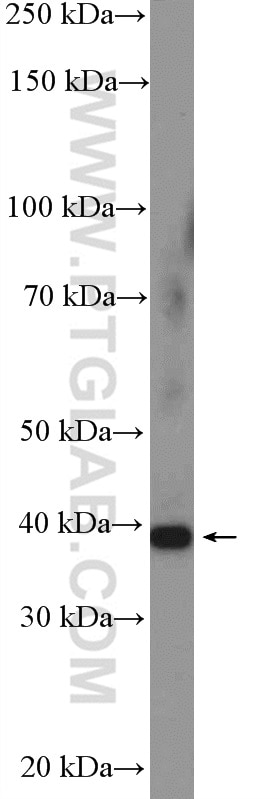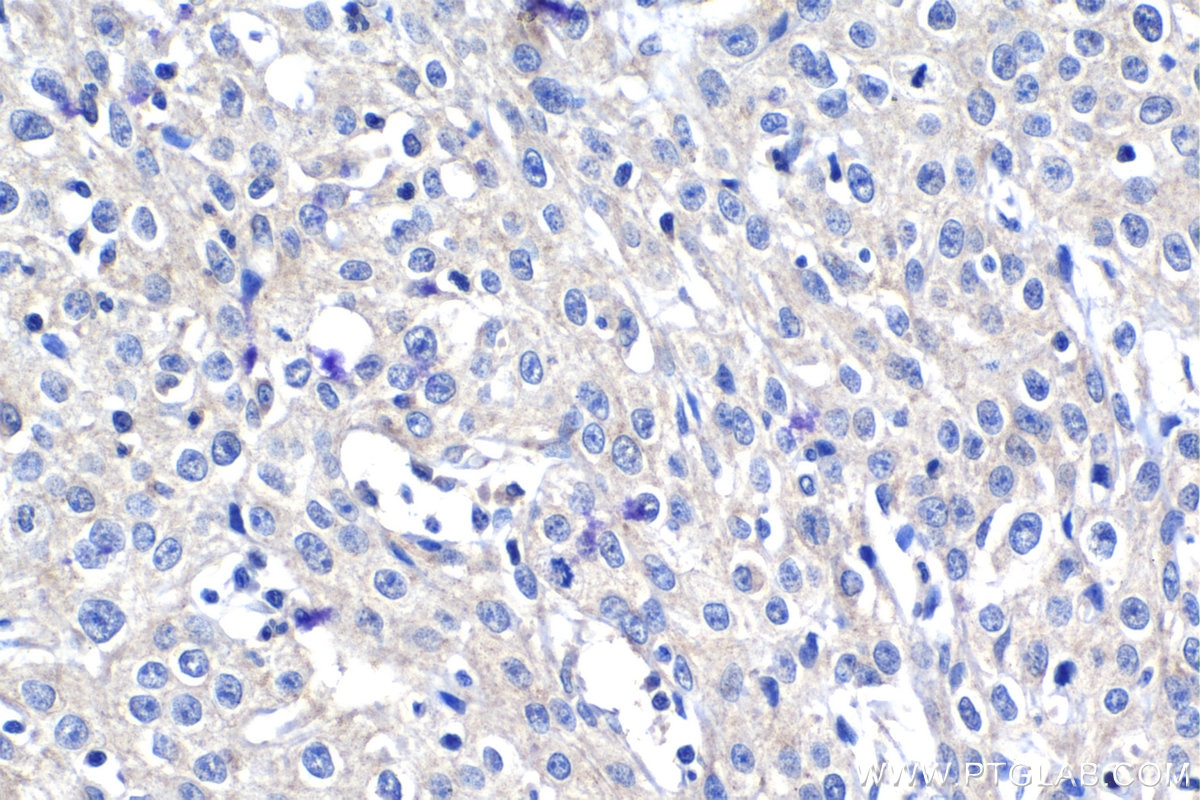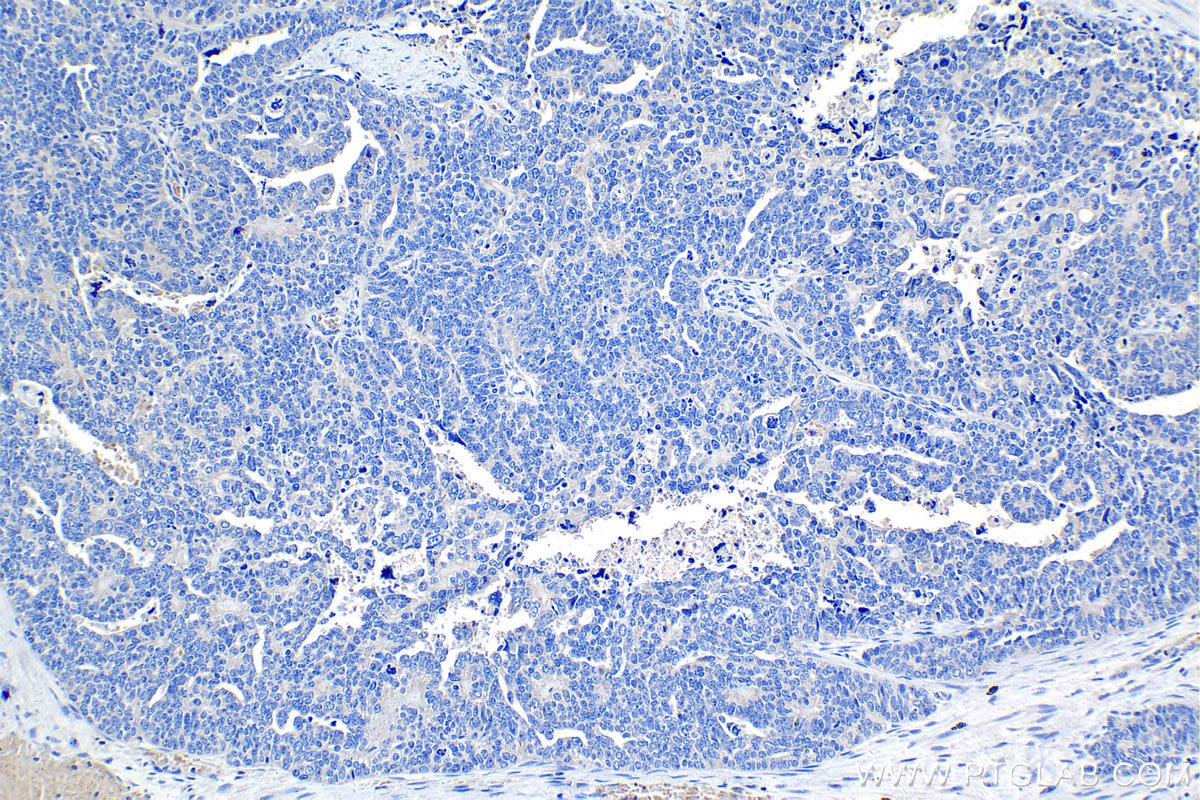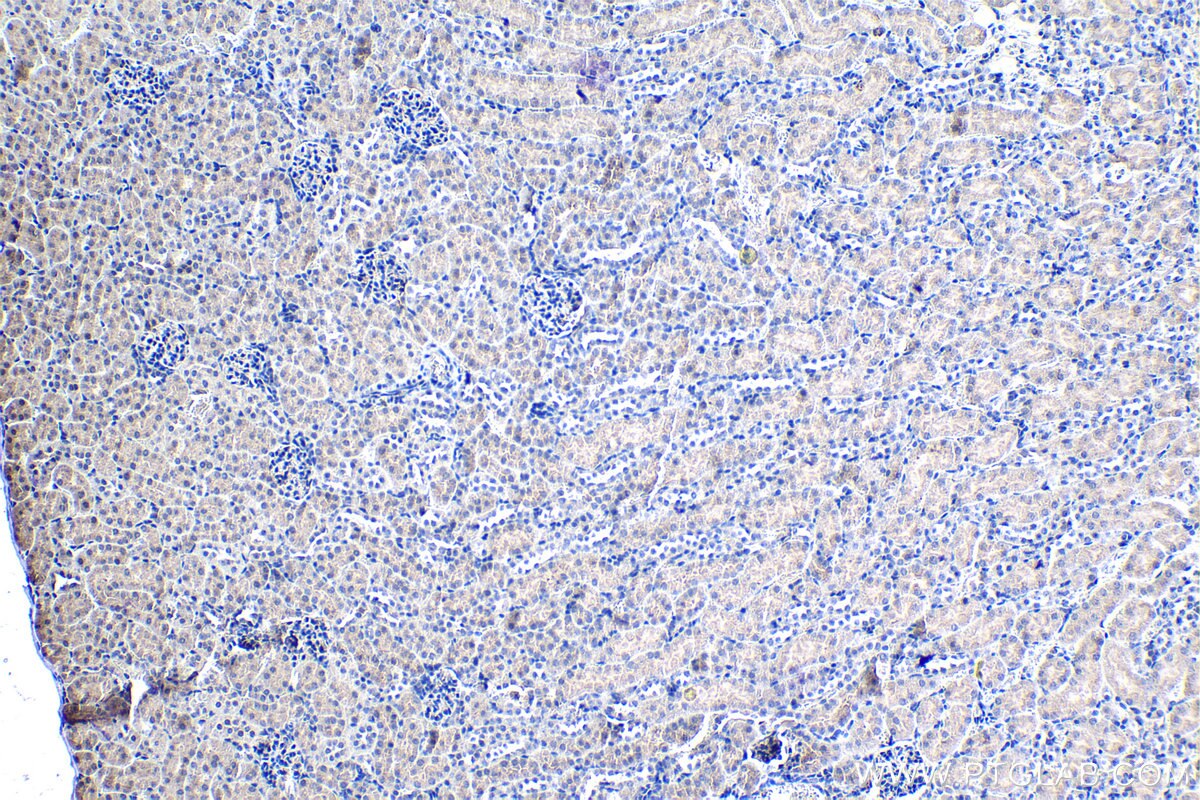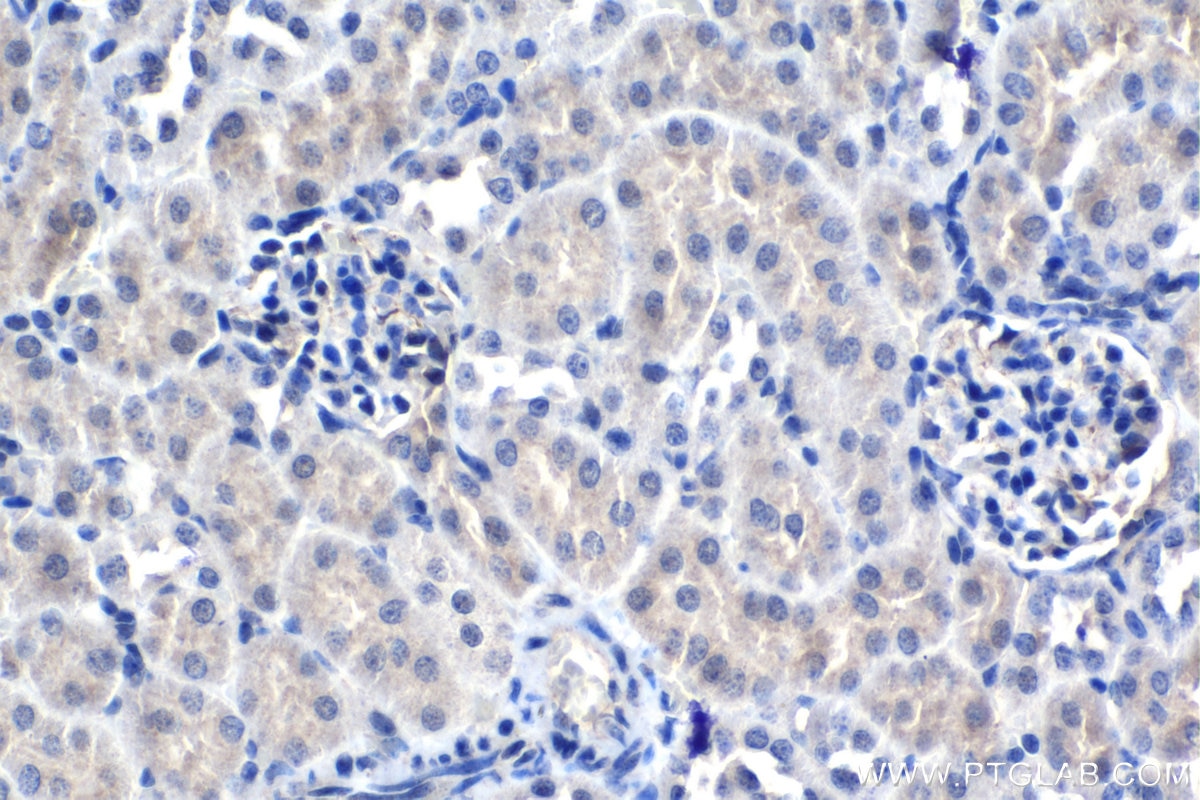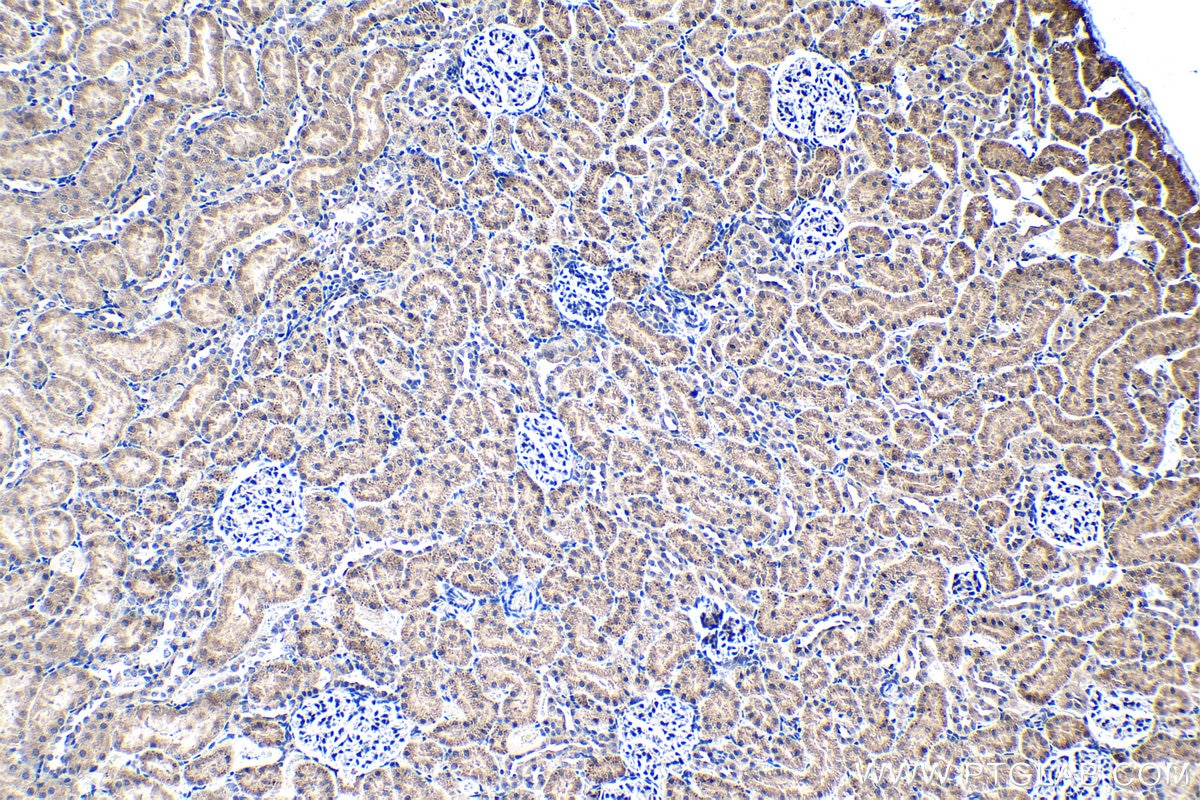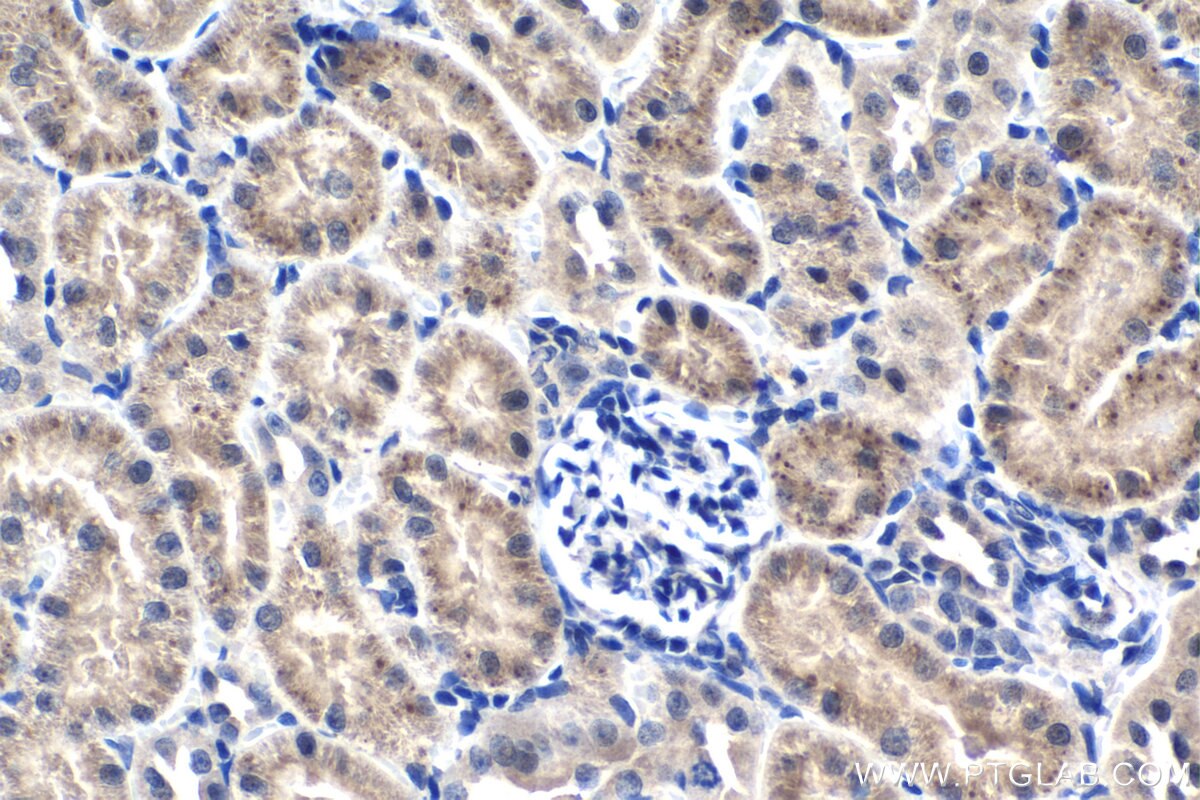- Featured Product
- KD/KO Validated
TSG-6 Polyklonaler Antikörper
TSG-6 Polyklonal Antikörper für WB, IHC, ELISA
Wirt / Isotyp
Kaninchen / IgG
Getestete Reaktivität
human, Maus, Ratte
Anwendung
WB, IHC, IF, ELISA
Konjugation
Unkonjugiert
Kat-Nr. : 13321-1-AP
Synonyme
Geprüfte Anwendungen
| Erfolgreiche Detektion in WB | NIH/3T3-Zellen |
| Erfolgreiche Detektion in IHC | Rattennierengewebe, humanes Zervixkarzinomgewebe, humanes Ovarialkarzinomgewebe, Mausnierengewebe Hinweis: Antigendemaskierung mit TE-Puffer pH 9,0 empfohlen. (*) Wahlweise kann die Antigendemaskierung auch mit Citratpuffer pH 6,0 erfolgen. |
Empfohlene Verdünnung
| Anwendung | Verdünnung |
|---|---|
| Western Blot (WB) | WB : 1:500-1:1000 |
| Immunhistochemie (IHC) | IHC : 1:250-1:1000 |
| It is recommended that this reagent should be titrated in each testing system to obtain optimal results. | |
| Sample-dependent, check data in validation data gallery | |
Veröffentlichte Anwendungen
| KD/KO | See 1 publications below |
| WB | See 7 publications below |
| IHC | See 3 publications below |
| IF | See 2 publications below |
Produktinformation
13321-1-AP bindet in WB, IHC, IF, ELISA TSG-6 und zeigt Reaktivität mit human, Maus, Ratten
| Getestete Reaktivität | human, Maus, Ratte |
| In Publikationen genannte Reaktivität | human, Maus, Ratte |
| Wirt / Isotyp | Kaninchen / IgG |
| Klonalität | Polyklonal |
| Typ | Antikörper |
| Immunogen | TSG-6 fusion protein Ag3885 |
| Vollständiger Name | tumor necrosis factor, alpha-induced protein 6 |
| Berechnetes Molekulargewicht | 277 aa, 31 kDa |
| Beobachtetes Molekulargewicht | 39 kDa |
| GenBank-Zugangsnummer | BC030205 |
| Gene symbol | TNFAIP6 |
| Gene ID (NCBI) | 7130 |
| Konjugation | Unkonjugiert |
| Form | Liquid |
| Reinigungsmethode | Antigen-Affinitätsreinigung |
| Lagerungspuffer | PBS with 0.02% sodium azide and 50% glycerol |
| Lagerungsbedingungen | Bei -20°C lagern. Nach dem Versand ein Jahr lang stabil Aliquotieren ist bei -20oC Lagerung nicht notwendig. 20ul Größen enthalten 0,1% BSA. |
Hintergrundinformationen
TSG-6 was first discovered by Lee when screening the cDNA expression library of human fibroblasts interfered by TNF-α. TSG-6 is expressed in normal fibroblasts, peripheral blood mononuclear cells, synovial cells and chondrocytes. It is constitutively expressed in tissue cells with immune barrier, high basal metabolism level and differentiation potential (such as mesenchymal stem cells), but it is usually not expressed in normal tissue cells, but can be induced by inflammatory mediators. TSG-6 has the functions of anti-inflammation, extracellular matrix remodeling and local microenvironment protection. It plays an important role in the repair of joint inflammation by binding with various ligands, including glycosaminoglycan, proteoglycan core protein and other matrix components, and directly binding with various chemokines and bone morphogenetic proteins. TSG-6 has shown anti-inflammatory effects in many diseases, including skin wound closure, pancreatitis, conjunctivitis, neuritis, intestinal ischemia-reperfusion injury, liver fibrosis, acute myocardial infarction and so on. It is the secreted protein product of tumor necrosis factor-stimulating gene-6 (TSG-6) with a molecular mass of about 35-38 kDa.(PMID: 34707499)
Protokolle
| PRODUKTSPEZIFISCHE PROTOKOLLE | |
|---|---|
| WB protocol for TSG-6 antibody 13321-1-AP | Protokoll herunterladen |
| IHC protocol for TSG-6 antibody 13321-1-AP | Protokoll herunterladenl |
| STANDARD-PROTOKOLLE | |
|---|---|
| Klicken Sie hier, um unsere Standardprotokolle anzuzeigen |
Publikationen
| Species | Application | Title |
|---|---|---|
JACC Basic Transl Sci Atheroprotective Effects of Tumor Necrosis Factor-Stimulated Gene-6. | ||
Front Pharmacol TSG-6 Inhibits Oxidative Stress and Induces M2 Polarization of Hepatic Macrophages in Mice With Alcoholic Hepatitis via Suppression of STAT3 Activation. | ||
Neurochem Res Tumor Necrosis Factor-stimulated Gene-6 (TSG-6) Secreted by BMSCs Regulates Activated Astrocytes by Inhibiting NF-κB Signaling Pathway to Ameliorate Blood Brain Barrier Damage After Intracerebral Hemorrhage. | ||
Contrast Media Mol Imaging TNFAIP6 Promotes Gastric Carcinoma Cell Invasion via Upregulating PTX3 and Activating the Wnt/β-Catenin Signaling Pathway
| ||
Neural Regen Res Tumor necrosis factor-stimulated gene-6 ameliorates early brain injury after subarachnoid hemorrhage by suppressing NLRC4 inflammasome-mediated astrocyte pyroptosis | ||
Front Immunol Neutrophil infiltration associated genes on the prognosis and tumor immune microenvironment of lung adenocarcinoma |
